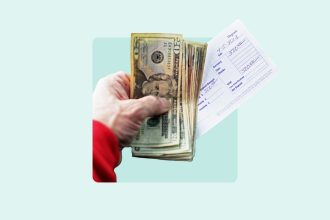Last year, the Transportation Security Administration screened a record 904 million air travelers, which worked out to an average of about 2.47 million per day. One of the biggest surprises in recent years has been the continued strength in travel demand, despite economic challenges including stubborn inflation, high interest rates and low consumer sentiment.
Since bottoming out in 2020 due to the COVID-19 pandemic, air travel volumes steadily grew from 2021 through 2024, setting records in 2023 and again in 2024. It made sense that travel demand was high immediately following the pandemic, as a flood of pent-up demand was unleashed, but the staying power has been impressive and unexpected.
Have a question about credit cards? E-mail me at [email protected] and I’d be happy to help.
Another record on tap?
This year’s passenger screening numbers could set another record, despite numerous airlines previously warning of lower demand and reduced profits. From Jan. 1 through July 14, 2025, the TSA processed an average of 2.452 million passengers per day, within whispering distance of the 2.453 million average from the same date range a year ago. This year was actually ahead of last year’s pace through the first five months; demand has tailed off a bit in June and July.
Uncertainty lingers
Even so, like so many things, the path forward is uncertain due to the many worries associated with potential tariffs, geopolitical events and recession chances. But it seems that so far at least, travelers have been climbing the wall of worry and traveling anyway. It’s another example of how soft data — that is the data pertaining to sentiment, for instance — has been depressed, yet hard data on jobs, consumer spending and economic growth has been more positive.
For example, the University of Michigan Consumer Sentiment Index is near an all-time low. And just 22 percent of U.S. adults plan to spend more on travel in 2025 than they did in 2024, according to Bankrate’s 2025 Discretionary Spending Survey. So far, however, the bark has been worse than the bite.
During their April earnings calls, several major airlines expressed concern that the second half of the year could be much weaker than the first. For example, at that time Delta Air Lines withdrew its full-year financial guidance and lamented that travel demand had “largely stalled.” But in its latest earnings announcement on July 10, Delta reported record quarterly revenue and reinstated full-year guidance with an upbeat tone, using words such as “stabilized” and “resilience” to describe travel demand.
Over the past few months, many tariffs were delayed or rolled back, although political rhetoric has ramped up again recently. Goods coming from many countries have already become more expensive, and a slew of further increases is possible pending the implementation of more tariffs on Aug. 1. Because they are services, airline and hotel costs aren’t directly subject to tariffs, but the connection is that many people could have less disposable income because of higher prices resulting from tariffs on groceries, clothing, furniture, electronics and other common household goods.
Prices have remained relatively steady
Many observers thought prices would have risen more by now, but retailers have been slower than expected to pass through tariff-related price hikes. The Consumer Price Index ticked up a bit in June (year-over-year, prices have risen 2.7 percent), but the inflation rate remains much lower than it was in 2021, 2022 and 2023. It’s even slightly lower than last year at this time.
Meanwhile, travel prices have declined significantly over the past year. The cost of lodging away from home (including hotels and motels) is down 3.7 percent year-over-year and airline fares are down 3.5 percent, according to the June CPI report.
While we could see more upward price pressures in the months to come as more tariffs filter through the supply chain, that’s more likely for physical goods such as cars, appliances and clothing.
Credit card issuers seem more optimistic, too
In contrast to the mood back in April, travel providers are now singing a much more upbeat tune. That tune echos that of several major credit card issuers, which perhaps isn’t surprising. There are many direct ties between travel and the credit card industry, ranging from consumer and business spending patterns to rewards and multibillion-dollar co-branded card relationships between the likes of Delta and American Express.
Credit card account openings declined in 2023 and 2024 and are on pace for another drop this year, according to Equifax. But green shoots of increased activity have started to appear, as evidenced by the major overhaul of popular travel credit cards such as the Chase Sapphire Reserve® (additional perks and a higher annual fee were announced in June) and The Platinum Card® from American Express (which has teased a significant overhaul planned for later this year). Citi is also rumored to be entering the luxury travel credit card space later this year.
Back in the spring, the Chase Sapphire Preferred® Card wooed new cardholders with a record-tying welcome bonus. Plus, throughout 2025, we’ve seen elevated introductory bonuses come and go on many airline and hotel co-branded cards. These are signs that card issuers are looking to grow again, after a few years of tightening lending standards and cutting back on marketing incentives as inflation and interest rates spiked and recession fears grew. Issuers aren’t throwing the doors wide open, but especially for those with higher credit scores and higher incomes, it has become more of a buyer’s market for compelling new card offers.
The bottom line
Whether you find yourself more aligned with depressed consumer sentiment or increased travel demand, there are certainly ways to make travel more affordable so you can join the potentially record-breaking crowds traveling this year.
Travel credit cards can be a great way to extend the value of your dollar and enjoy champagne travel on a beer budget. But many of these cards are getting more expensive and complicated. Airlines and hotels are prioritizing paying customers and making it harder and more expensive to secure free flights and accommodations (for example, by devaluing points and miles and requiring, say, 25,000 miles for a freebie that may have cost 20,000 last year).
Cash back cards are often simpler and more universally appealing, although perhaps not as lucrative. The best credit card rewards strategies emphasize individual users’ spending habits and desires. Look to maximize your top purchase categories, consider what you want to get out of your rewards and evaluate how much work you’re willing to put in. Travel rewards can be more lucrative, but they’re also more complicated.
Why we ask for feedback
Your feedback helps us improve our content and services. It takes less than a minute to
complete.
Your responses are anonymous and will only be used for improving our website.
Help us improve our content
Read the full article here
















